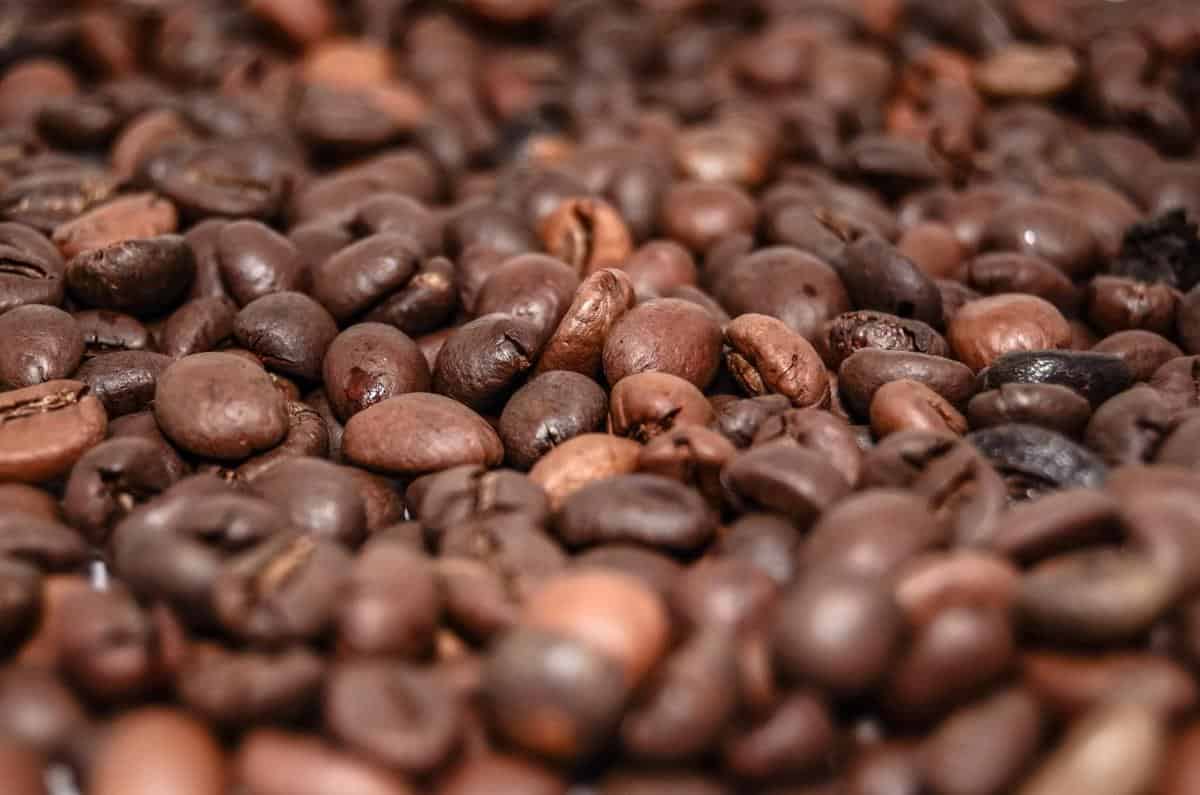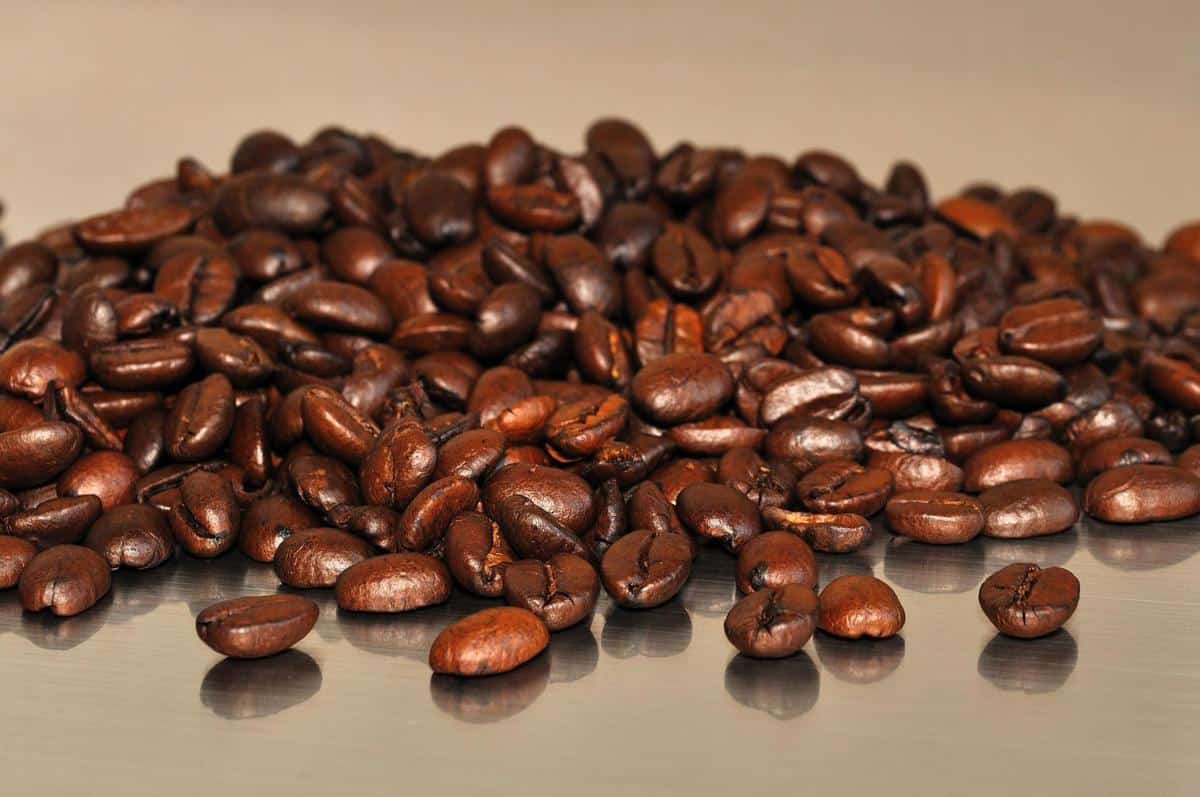In recent years, coffee enthusiasts and connoisseurs alike have been captivated by the allure of light coffee. This growing trend has sparked a new appreciation for the delicate flavors and nuanced aromas that can be found in this unique brew.
What sets light coffee apart is not just its taste, but also the meticulous process behind brewing it to perfection. From sourcing high-quality beans to mastering different brewing methods, every step is crucial in achieving a cup that embodies the essence of light coffee.
The art of crafting light coffee involves careful attention to detail and an unwavering commitment to quality. A fundamental aspect lies in sourcing exceptional beans from premier regions around the world. These beans are selected based on their flavor profiles and characteristics that lend themselves well to being roasted at lighter levels. The impact of roasting on flavor and aroma cannot be overstated, and lighter roasts truly allow the natural flavors of the coffee beans to shine.
Understanding the distinct characteristics of light coffee is essential to appreciating its delicate appeal fully. Lighter roasts often exhibit subtle flavors, floral notes, and a gentle acidity that provide a refreshing and enjoyable drinking experience.
The bright acidity found in these roasts can evoke images of citrus fruits or flowers, while the body retains a crispness that invigorates the senses. With every sip, one can truly taste and appreciate the complexity that lies within each cup of meticulously brewed light coffee.
As the popularity of light coffee continues to soar, so does our understanding of its potential health benefits. Research suggests that choosing lighter roasts may retain more antioxidants and polyphenols compared to darker roasts. These beneficial compounds are believed to have positive effects on digestion, metabolism, and overall well-being. By embracing light coffee as part of a balanced and mindful lifestyle, one can indulge both their taste buds and their health.
Join us as we embark on a delightful journey through the world of light coffee. From exploring a variety of beans to learning how to brew the perfect cup at home, we will delve into every aspect of this refined and elegant beverage. So grab your favorite mug and prepare to savor the artistry and joy that comes with each sip of light coffee delight.
The Art of Crafting Light Coffee in Every Cup
As the demand for light coffee continues to rise, mastering the art of crafting this delicate brew has become a true skill. Brewing light coffee requires a meticulous process that starts with sourcing high-quality beans and ends with a perfectly balanced cup of flavorful and aromatic coffee. In this section, we will unveil the secrets behind brewing light coffee and explore different methods to achieve perfection.
The first step in crafting light coffee is to carefully select the right beans. High-quality beans are key to achieving the desired flavor and aroma. When sourcing beans for light coffee, it is best to look for single-origin options, as they often boast unique flavor profiles. Additionally, fair-trade and organic options are gaining popularity among conscious consumers.
Once you have your beans, the brewing process begins. There are various methods that can be used to brew light coffee, each contributing its own nuances to the final cup. Some popular methods include pour-over brewing, using a Chemex or V60 dripper, and using an AeroPress. The choice of brewing method ultimately depends on personal preference and desired flavor characteristics.
To illustrate different brewing methods for light coffee, let’s take a closer look at two popular choices: pour-over brewing and using an AeroPress.
Pour-over brewing is known for producing a clean and crisp cup of coffee with pronounced acidity. To brew using this method, you will need a pour-over apparatus such as a Chemex or V60 dripper, along with filter paper. Start by heating water to the appropriate temperature (around 195°F) and then wetting the filter paper with hot water to remove any papery taste.
Next, add freshly ground light roast coffee into the filter paper and slowly pour hot water in circular motions over the grounds. Allow the water to flow through gradually while maintaining a consistent pouring rate. This method extracts bright flavors from the beans while bringing out their delicate complexity.
Alternatively, if you prefer a slightly bolder cup of light coffee with a fuller body, the AeroPress is an excellent choice. This method involves immersing the coffee grounds in water for a shorter period of time, resulting in a different flavor profile. To brew using an AeroPress, start by placing a filter paper inside the cap and securing it onto the chamber. Wet the filter paper and preheat your brewing vessel.
Add ground light coffee into the AeroPress, pour hot water over it, and stir gently for about 10 seconds. Press down on the plunger slowly to extract the brewed coffee into your desired cup or serving vessel. The AeroPress method is known for its versatility and allows for experimentation with different grind sizes and brewing times.
By mastering these and other brewing methods, coffee enthusiasts can create their own individualized light coffee experience. Whether you prefer a bright and acidic cup or a more nuanced and flavorful brew, the art of crafting light coffee allows for endless possibilities.
| Light Coffee Brewing Method | Description |
|---|---|
| Pour-Over Brewing | Pour-over brewing uses a dripper apparatus such as Chemex or V60 to extract bright flavors from light roast beans. |
| AeroPress | The AeroPress method involves immersing light roast grounds in water before pressing them out for a bolder cup of coffee. |
Understanding the Characteristics of Light Coffee
Light coffee, with its distinct flavors and delicate acidity, offers a refreshing and enjoyable coffee experience. Understanding the characteristics that set light coffee apart from its darker counterparts is essential for any coffee enthusiast. In this section, we will delve into the subtle flavors, floral notes, and delicate acidity found in light coffee.
Distinct Flavor Profiles
One of the key characteristics of light coffee is its distinct flavor profile. Light roast levels allow the natural flavors of the beans to shine through, resulting in a complex and nuanced taste. Light coffee often exhibits bright and vibrant flavor notes such as citrus, berries, and even floral undertones. These delicately balanced flavors create a layered and enjoyable drinking experience.
Delicate Acidity
Light coffee is known for its delicate acidity, which adds brightness and liveliness to each sip. Unlike dark roasts that may have a more intense or bold acidity, light coffees showcase a subtle tanginess that is pleasant on the palate. This gentle acidity enhances the overall balance of the coffee and contributes to its refreshing nature.
Aromatics
Aromatic compounds play a crucial role in creating the unique experience of light coffee. Lightly roasted beans maintain more volatile aromatic compounds compared to their darker counterparts due to shorter roasting times. As a result, light coffees often offer an enticing aroma with floral or fruity notes that can be reminiscent of jasmine, honeydew melon, or blueberries. The aroma further enhances the sensory experience of enjoying a cup of perfectly brewed light coffee.
Understanding these characteristics allows individuals to appreciate the nuances and subtleties that make light coffee so enchanting. Whether you are exploring different single-origin beans or experimenting with various brewing methods, embracing these attributes will elevate your appreciation for this brew style.
Intrigued by these unique traits? Now let’s delve into the health benefits of drinking light coffee in the next section.
The Health Benefits of Drinking Light Coffee
Retaining Antioxidants and Polyphenols
One of the significant health benefits of choosing light coffee is its higher retention of antioxidants and polyphenols. During the roasting process, these beneficial compounds are susceptible to degradation. However, because light coffee is roasted for a shorter duration at lower temperatures, it retains more of these valuable substances compared to darker roast levels.
Antioxidants play a vital role in protecting our bodies against free radicals, which can cause damage to our cells. By consuming light coffee with its higher antioxidant content, individuals can support their overall health and well-being. Polyphenols, on the other hand, have been associated with numerous health benefits, including reducing the risk of certain chronic conditions such as heart disease and diabetes.
Potential Impact on Digestion and Metabolism
Another advantage of drinking light coffee is its potential positive impact on digestion and metabolism. The minimal amount of roasting involved in producing light coffee means that it contains higher levels of chlorogenic acid, a natural compound found in coffee beans.
Chlorogenic acid has been linked to various health benefits, including aiding digestion by stimulating the production of gastric acid and promoting bowel movements. Furthermore, some studies suggest that chlorogenic acid may have a positive effect on metabolism by enhancing fat oxidation and glucose utilization in the body.
Overall Well-Being
Choosing light coffee can contribute to an overall sense of well-being. As a lighter roast, it tends to contain less caffeine compared to darker roasts. This can be advantageous for those who are sensitive to caffeine or prefer a milder stimulant effect.
Additionally, lighter roast levels often exhibit less bitterness due to reduced caramelization during the roasting process. This smoother flavor profile makes light coffee more enjoyable for individuals who find stronger or bolder flavors overwhelming.
By opting for light coffee with its potential health advantages and pleasant taste, individuals can incorporate this brew into their daily routine while supporting their well-being. However, it’s important to remember that individual responses to coffee consumption may vary, and it’s always recommended to consult with a healthcare professional for personalized advice.
Exploring the Variety of Light Coffee Beans
Light Coffee Delight: Brewed to Perfection offers an array of light coffee beans that are perfect for brewing a refreshing and enjoyable cup of coffee. From their origin, flavor profiles, to recommended brewing techniques, this section delves into the diverse selection of beans available for conscious consumers.
Origin
When it comes to exploring the variety of light coffee beans, it’s essential to understand their origin. Each region brings unique characteristics to the flavor profile of the coffee. For example:
- Ethiopian Yirgacheffe: Known for its bright acidity and fruity flavors
- Colombian Supremo: Offers a balanced taste with hints of caramel and chocolate
- Costa Rican Tarrazu: Renowned for its citrusy notes and delicate aroma
Flavor Profiles
Light coffee beans have distinct flavor profiles that set them apart from darker roasts. Some popular flavor profiles in light coffee include:
- Floral: Light coffees often exhibit floral notes such as jasmine or lavender, enhancing the sensory experience.
- Citrusy: Look out for bright, zesty flavors like lemon or orange, which add a refreshing twist to your cup.
- Nutty: Many light coffees have nutty undertones like almond or hazelnut, providing a pleasant balance.
Brewing Techniques
To truly appreciate the unique attributes of light coffee beans, it’s crucial to employ appropriate brewing techniques. Here are some recommended methods:
- Pour-over: This method allows you to control factors like water temperature and extraction time, resulting in a clean and vibrant cup of light coffee.
- Aeropress: With its versatility and ability to retain subtle flavors while minimizing acidity, the Aeropress is ideal for showcasing the delicate nature of light coffees.
- Cold brew: Cold brewing extracts flavors slowly over time, producing a smooth yet flavorful cup with lower acidity. Light coffees shine in this method as their delicate notes aren’t overwhelmed by a heavier roast.
By familiarizing yourself with the origin, flavor profiles, and brewing techniques for light coffee beans, you can embark on an exciting journey of experimentation and discover your preferred cup of Light Coffee Delight.
Light Coffee
Light coffee is not only known for its delicate flavors, but also for its versatility in creating various beverage creations. Whether you prefer a hot cup of coffee to start your day or a refreshing iced coffee on a summer afternoon, light coffee can be the perfect base for your favorite drinks. Its subtle and nuanced taste allows it to blend well with other ingredients, making it an excellent choice for both traditional and creative coffee concoctions.
For those who enjoy the comforting warmth of a hot beverage, light coffee can be used as the foundation for delightful lattes, cappuccinos, and mochas. The lighter roast levels of the beans allow the intricate flavors to shine through, providing a balanced and smooth taste in each sip. Adding steamed milk and foamy froth to light coffee creates a rich and creamy texture that further enhances the overall experience.
On the other hand, if you prefer a chilled beverage to beat the summer heat, light coffee lends itself perfectly to iced coffees and cold brews. The lighter flavors of these beans complement the addition of ice, milk, and sweeteners without overpowering them. Cold brewing methods can also bring out different aspects of the beans’ flavor profile, resulting in a refreshing and invigorating cold drink.
To elevate your light coffee experience even further, you can experiment with different flavor combinations by adding syrups, spices, or extracts. For example, a vanilla-infused light coffee can provide a subtle sweetness that pairs well with baked goods like muffins or scones. On the other hand, adding a hint of cinnamon or nutmeg can create a warm and cozy autumn-inspired beverage.
| Light Coffee Beverage | Description |
|---|---|
| Light Coffee Latte | A creamy and smooth hot beverage made with light coffee and steamed milk. Can be customized with syrups or spices. |
| Iced Light Coffee | A refreshing cold beverage made by pouring light coffee over ice. Can be mixed with milk, sweeteners, or flavorings. |
| Cold Brew Light Coffee | A smooth and low-acidic cold drink made by steeping coarsely ground light coffee in cold water for an extended period of time. |
Brewing Light Coffee at Home
For coffee lovers who enjoy the subtle elegance of light coffee, brewing a perfect cup at home can be a rewarding experience. With the right techniques and tools, you can recreate the delicate flavors and refreshing aroma that make light coffee so appealing. In this section, we will provide some valuable tips and tricks to help you brew light coffee like a pro in the comfort of your own home.
First and foremost, it is essential to start with high-quality beans. Look for beans that are specially roasted for light coffee, as they will have the ideal balance of flavors. Specialty coffee shops or online retailers are excellent sources for these beans. Additionally, consider purchasing whole bean coffee and grinding it just before brewing to ensure maximum freshness.
When it comes to brewing methods, there are several options that yield fantastic results with light coffee. Pour-over brewing methods such as Hario V60 or Chemex allow for precise control over extraction and bring out the nuanced flavors of light coffee beautifully. Alternatively, if you prefer convenience without compromising quality, an AeroPress can deliver exceptional results as well.
To achieve the perfect brew, water temperature and extraction time play crucial roles. Use water that is heated between 195°F (90°C) and 205°F (96°C). Avoid using boiling water, as it can scorch the delicate flavors of light coffee. Extraction time varies depending on your preferred brewing method but aim for around three to four minutes for optimal flavor extraction.
Experimentation is key when it comes to finding your personal preference in terms of grind size, water-to-coffee ratio, and brew time. Adjust these variables according to your taste preferences until you find your perfect cup of light coffee.
By following these tips and utilizing your creativity along the way, you’ll soon master the art of brewing light coffee at home. Enjoy exploring different beans, experiment with different recipes and techniques, and delight in the satisfaction of creating your own light coffee masterpiece.
The Future of Light Coffee
As the popularity of light coffee continues to grow, so does the demand for new trends and innovations within the industry. Coffee enthusiasts and professionals alike are constantly pushing the boundaries to create unique and exciting experiences for consumers. In this section, we will explore some of the emerging trends and innovations in the world of light coffee.
- Farming Practices: With a focus on sustainability and ethical sourcing, there is a shift towards more environmentally-friendly farming practices in the growing of light coffee beans. Farmers are implementing methods such as shade-grown cultivation or organic farming to minimize their impact on the environment while producing high-quality beans. Additionally, there is an increasing emphasis on fair-trade practices, ensuring that farmers receive fair compensation for their hard work.
- Roasting Techniques: Roasters are experimenting with different roast profiles to enhance the flavors and aromas of light coffee. Some are utilizing techniques like slow roasting or air roasting to achieve a lighter roast while still preserving the unique characteristics of the beans. By carefully controlling the temperature and duration of the roast, roasters can bring out specific flavor notes and nuances that make light coffee so delightful.
- Brewing Equipment: Innovations in brewing equipment have also contributed to the future of light coffee. From specialty brewers designed specifically for light roasted beans to precise temperature control features on espresso machines, these tools aim to optimize extraction methods for achieving the perfect cup of light coffee at home or in cafes. Automated pour-over systems and immersion brewing devices are also gaining popularity due to their ability to unlock specific flavors characteristic of light roasted beans.
The future looks bright (and light) for lovers of brewed-to-perfection light coffee. As trends continue to evolve, it’s exciting to see how these innovations will shape and enhance our coffee experiences. Whether it’s through sustainable farming practices, innovative roasting techniques, or advancements in brewing equipment, there is no doubt that the future will bring even more delightful surprises for light coffee enthusiasts.
Conclusion
In conclusion, light coffee brings a subtle elegance to the world of coffee brewing. As we have explored throughout this article, the art of crafting light coffee requires meticulous attention to detail and high-quality beans. The distinct characteristics of light coffee, such as its delicate flavors and refreshing acidity, contribute to a truly enjoyable coffee experience.
Beyond its taste, light coffee also offers potential health benefits. With lower roast levels, it retains more antioxidants and polyphenols than darker roasts. These compounds can have positive effects on digestion, metabolism, and overall well-being. By choosing light coffee, you not only treat your taste buds but also prioritize your health.
Exploring the variety of light coffee beans opens up a world of flavor profiles, origins, and brewing techniques. Whether you prefer fair-trade or single-origin options, there is something for every conscious consumer. Additionally, the versatility of light coffee shines through in various beverage creations and food pairings.
Now that you have learned about the allure and unique attributes of brewed-to-perfection light coffee, it is time to embrace this refined experience. We encourage you to embark on your own light coffee adventures by exploring different beans and experimenting with brewing methods. Share your discoveries with fellow coffee enthusiasts and savor every sip of this gentle delight.
So grab your favorite mug and let the journey into the world of light coffee begin.
Frequently Asked Questions
What is the lightest type of coffee?
The lightest type of coffee refers to the roast level, specifically the light roast. Light roast coffee is characterized by its pale color, often a lighter brown shade, and a delicate flavor profile.
The beans used for light roast have undergone less roasting time, which allows their inherent flavors to shine through. This type of coffee usually has a higher acidity level and retains more caffeine content compared to darker roasts.
What is a very light coffee?
A very light coffee can be described as one that is brewed using a lighter roasted bean or made with a high proportion of milk or other additives. When referring to the roast level, it indicates a gentle roasting process that preserves the unique characteristics and nuanced flavors of the coffee bean.
Very light coffees are typically less bold and slightly more acidic than darker roasts, offering a crisp and bright taste experience.
Does light coffee have less caffeine?
Contrary to what some might assume, light coffee does not necessarily have less caffeine than dark coffee. Caffeine content is primarily determined by factors such as bean variety and brewing method rather than roast level alone.
However, it is true that the longer the roasting process, the more caffeine is lost due to heat exposure. Therefore, when comparing beans of similar origin and preparation methods, lighter roasted coffees may retain slightly more caffeine since they undergo shorter roasting times.
What coffee is lighter on the stomach?
If you’re looking for a coffee that is lighter on the stomach, opt for a medium-to-light roasted blend with low acidity levels. These types of coffees generally have milder flavors while still offering complexity and depth in taste without overwhelming bitterness or acidity that can cause digestive discomfort.
Additionally, choosing coffees with lower levels of bitterness may help reduce stomach irritation for those who are more sensitive or have digestive issues.
What is the mildest coffee to drink?
The mildest coffee to drink can vary depending on personal preferences; however, certain varieties are commonly regarded as having mild flavor profiles. One such example is Arabica coffee beans known for their smoothness, subtle sweetness, and lower acidity compared to other coffee species.
Additionally, coffees brewed using lighter roasted beans often have milder flavors that allow the natural characteristics of the bean to shine through without any overpowering notes. Ultimately, the mildest coffee is subjective and can be discovered through exploration and experimentation with different origins, processing methods, or roast levels to find one’s ideal flavor profile.









